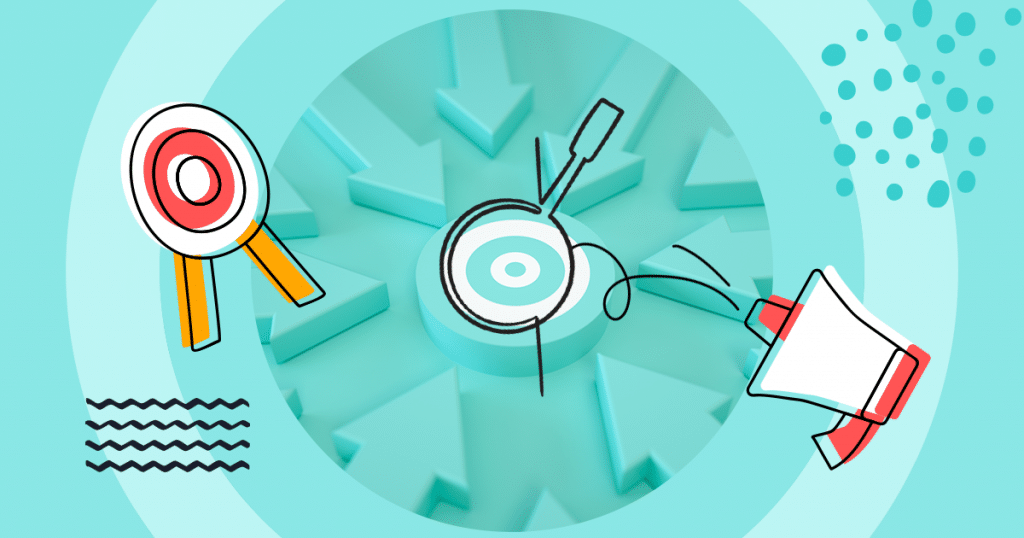Today businesses benefit from incorporating a range of strategies to meet marketing goals and increase their customer base.
Determining which marketing strategy or strategies to choose, however, depends on a variety of factors, including how many targeted audience segments your brand prefers to focus on at any one given time.
This strategy determination will also affect your overall digital marketing requirements and can increase or lower the number of resources required.
One beneficial approach for many companies today is to focus on concentrated marketing.
With this particular strategy, you narrow the focus of your marketing efforts, create more personalized experiences, and can gain long-term customer loyalty.
- What is Concentrated Marketing?
- How Does Concentrated Marketing Benefit Your Business?
- Concentrated vs Differentiated vs Undifferentiated Marketing
- How Can You Use Concentrated Marketing?
- 5 Examples of Successful Concentrated Marketing
- Wrap Up: Concentrated Marketing Can Be a Successful Strategy for Your Brand
What is Concentrated Marketing?
Concentrated marketing is a solid strategy used by marketers to focus all their efforts on one particular target audience segment.
In other words, the marketing strategy caters all of its marketing initiatives to serving only one segment of the market.
Another way to phrase it is to practice niche marketing, that is, to place the emphasis on how your products or services meet the specific needs or wants of a particular niche audience.
Your particular niche for concentrated marketing may include factors based on shopping habits, gender, personality traits, or many others.
For example, you may determine your target audience segment to be something similar to the following ones.
- Pet owners
- Homeowners
- Fitness enthusiasts
- People with certain health conditions
- Eco-conscious consumers
- Residents who reside in a specific geographical location
By choosing to go with the concentrated marketing approach, companies focus on a smaller market segment that promises profitability.
Once you understand your market segment, you can fine-tune your services, products, and prices to meet the specific needs of that targeted audience.
How Does Concentrated Marketing Benefit Your Business?
A concentrated marketing strategy can benefit a variety of business types.
Small businesses and startups, in particular, will find it to be a valuable approach, saving them both time and money.
Larger brands can also use concentrated marketing if they have a well-defined target audience for one or more of their products or services.
Whatever your particular business type, concentrated marketing can benefit you in the following ways.
Reduces the Number of Resources Needed
With a concentration of targeting only one specific audience segment, your business will likely use fewer resources to market your products or services.
This reduction in the number of needed resources can lead to a higher chance of more effective marketing and advertising for what you have to offer.
For example, the choices of where you advertise and market your product or service will be fewer, saving you time in creating different types of content and also in advertising expenses.
You can more efficiently use your resources for marketing, production, and distribution.
Customizes Your Brand for Your Targeted Audience
Concentrated marketing allows you to customize and personalize your marketing efforts.
Campaigns and marketing techniques will be personalized based on your target consumer, and your brand can focus on customizing its image.
Positions You as Experts in Your Particular Field
Your company will find it easier to become experts in your particular field, which can greatly enhance the image of your company and also bolster your bottom line.
With a concentrated marketing effort, you can identify the best ways to market to consumers in your particular industry and position your brand within that industry.
Builds Customer Loyalty
When marketing to and meeting the needs of one particular customer segment, you can build a trust that leads to long-term customer loyalty.
The more their needs are met, the more likely your customers will become loyal to your brand.
Also, by catering to one group of your target audience, you provide customers with a sense of exclusivity, and this is another reason customers stay loyal.
Creates an Easier Way to Analyze Campaign and Strategy Effectiveness
Concentrated marketing will likely generate fewer amounts of marketing data since you are focusing efforts on one market segment only.
The smaller sets of data are positive in that it will now take you less time to analyze campaigns and the effectiveness of your strategy, allowing you to make quicker modifications and improvements to your marketing tactics.
It also provides for more time and focused attention on analyzing and understanding your selected segment’s wants, needs, and interests.
Makes it Easier to Monitor the Competition
When targeting all your marketing efforts on one target audience segment, the number of competitors drops, making it much easier for you to know who they are and to monitor them.
Individual companies may experience more benefits unique to their particular offerings or location, but overall, the six above are generally experienced by all who undertake the concentrated marketing strategy.
Concentrated vs Differentiated vs Undifferentiated Marketing
Essentially, there are three major strategies marketers turn to these days to promote a brand, product, or service or to convey a message effectively.
To help further define concentrated marketing, it helps to know what the other two are and how they differ.
Differentiated Marketing
Differentiated marketing encompasses a marketing strategy focusing on two or more market segments.
Brands that use differentiated marketing offer one service or product and market it to various customers or market segments.
The goals behind differentiated marketing include increasing brand awareness, expanding reach, and increasing revenue.
Differentiated marketing differs from concentrated marketing in that it develops strategies to target multiple market segments, or kinds of customers, while concentrated marketing focuses on just one segment for its product or service.
Undifferentiated Marketing
Undifferentiated marketing, on the other hand, refers to a strategy wherein all of a brand’s target audience segments are targeted with the same messages.
Basically, it’s a one message-fits-all strategy.
Marketers create a message that can be applied to the various market segments of their targeted audience.
Such messages are usually simplistic or general in nature, appealing to the basic natures of the population and relatable in some way to a high number of potential customers.
The biggest differences between concentrated and undifferentiated marketing include the intended target audience, the number of marketing channels required, and the overall costs involved.
How Can You Use Concentrated Marketing?
The way you use concentrated marketing will depend largely on the size of your business and whether or not you intend to expand or stay content with where you are.
Concentrated marketing can serve as a stepping stone to growing your business, building up your image and reputation with one target audience.
It can also save you money and resources in the beginning as you build your business and allows you to reinvest profits to help expand and grow.
As for a long-term approach, concentrated marketing is particularly valuable for smaller businesses that only offer one product or choose to stay small. It can also benefit those businesses with a largely local clientele.
With concentrated marketing, these businesses can use their available resources more effectively and even concentrate on customers often overlooked by other companies.
The steps to get started with a concentrated marketing strategy are as follows.
1. Conduct Thorough Research
Conduct research to identify your niche and target audience segment. Important aspects to look for include financial and structural attractiveness of the segment and the objectives, capabilities, and resources of your company to market to this segment.
2. Define your Target Customer
Thoroughly define your target customer in this market segment by creating your buyer personas.
3. Identify Where Target Customers Spend Their Time
Identify where your target audience segment spends their time, both online and offline, so you know where to focus your content.
4. Create a Content Marketing Plan
Create a content marketing plan geared specifically to your target audience segment. All content needs to be consistent, similar in tone of voice and message, and well-tailored to perfectly fit your niche while still making you unique in the marketplace.
5. Plan Your Concentrated Marketing Strategy
Plan your marketing strategy. Focus on the marketing channels that will be the most effective and where you can reach your target customers. Include related events whenever possible, and keep an eye out for potential influencers to partner with.
6. Execute and Monitor Your Strategy
Execute your concentrated marketing strategy and continuously monitor and analyze its results. Make modifications as you learn more about your customers’ behavior. Use interactive content to learn even more and invite more engagement with your brand.
5 Examples of Successful Concentrated Marketing
Businesses are already succeeding with the use of concentrated marketing. Here are 5 examples to show you what this success looks like.
Rolls-Royce
Rolls-Royce, the luxury car manufacturer, uses concentrated marketing to reach customers in over 120 countries worldwide.
With a reputation for high-quality and high prices, the brand’s target audience segment is those with at least $30 million in liquid assets.
One marketing tactic Rolls-Royce has perfected is the sending of personally signed letters to its clients.

Munchkin
Founded in 1991, Munchkin, the infant and toddler products company, utilizes concentrated marketing to target the parents of these particular age groups.
One of their successful marketing tactics is their blog, where they consistently add posts on parenting.
The brand makes it easy for parents to search for their products and also incorporates mobile-friendly tactics for the parents that are busy and constantly on the go.
In addition, they work with parenting influencers who showcase the Munchkin products in sponsored content.
Rolex
A leading watch manufacturer, Rolex, creates various promotional campaigns to attract its target market segment.
These campaigns enlist famous and influential artists and athletes wearing Rolex watches who well represent the market segment of strong, successful, career-minded consumers.
Justice
Justice is a clothing company geared to 6–12-year-old girls with stores across the US and Canada.
To reach their targeted audience, the brand chooses to stay with a concentrated marketing strategy. Unlike Munchkin and its focus on the parents, Justice concentrates on the tweens themselves.
Every Justice promotion and marketing tactic focuses on this market segment, including their mobile app, Live Justice.
Within the app, Justice offers the girls a variety of activities, including quizzes, games, wish lists, and various free content.
The app also is a place for community, allowing the girls to discover and share ways to improve the world around them.
Omega
One of the finest, high-quality watchmakers in the world, Omega, utilizes concentrated marketing by depicting their ideal client in an ad, the famous golfer Rory Mcllroy.
Mcllroy is attractive, successful, and influential with a passion for various industries and sports. As such, he defines the target audience segment of those individuals who balance career and family.
Wrap Up: Concentrated Marketing Can Be a Successful Strategy for Your Brand
When it comes to marketing strategies, brands today have various options.
For those who discover that concentrated marketing is the right fit for them, benefits abound.
Concentrated marketing will allow your brand to narrow the focus to one target audience segment and create the best strategy to reach them. In turn, you’ll create strong customer loyalty and retention in the process.
With a narrower focus, you can also better allocate resources and more efficiently execute your marketing strategy.
Overall, concentrated marketing, when compared to the other strategies of differentiated and undifferentiated marketing, focuses your efforts to reach a select segment of the population.
With it, you can create a more concise, personal content marketing plan that speaks to your smaller audience and wins them over.
Ready to elevate your marketing strategies with engaging and interactive content? Discover how our interactive content experiences can boost your conversions and brand awareness.
Check out our Content Experience page to learn more and schedule a free consultation with our experts.











